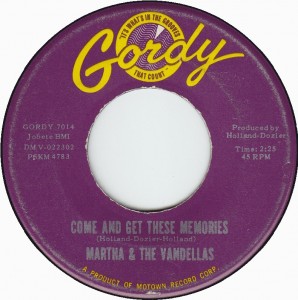
 The way I figure it we all have three kinds of memories. There are recollections of things that actually happened to us. Then there are future memories of things that are going to happen to us. Some theorize that this kind of memory is what leads to deja vu. The third category is memories of things that might not have happened exactly as we remember them, but seem clear to us nonetheless.
The way I figure it we all have three kinds of memories. There are recollections of things that actually happened to us. Then there are future memories of things that are going to happen to us. Some theorize that this kind of memory is what leads to deja vu. The third category is memories of things that might not have happened exactly as we remember them, but seem clear to us nonetheless.
In its most benign form the latter category is what informs the best storytelling. After all, what’s more fun than a tall tale? It’s harmless, and entertaining. Of course there’s a more malignant side to inaccurate memories, and that’s what often leads to disagreements and worse.
I’ve got my share of stories. Whether they actually happened the way I remember them, who knows. But I still like to tell them, and sometimes people seem to enjoy hearing them. I’ve probably embellished them some, ok a lot, over the years, but that’s what makes for great storytelling. You probably have stories of your own.
A couple of weeks ago I returned to my boyhood home in Atlantic City. Despite the many changes to the city over the years, most of them not for the better, it’s still a magic place for me as long as I stick close to those few touchstones that remain there for me. Memories.
All of this thinking about memories led me straight to Martha Reeves & the Vandellas. After the Supremes, they were Motown’s biggest girl group. Martha wasn’t even part of the group when they got together in 1960 as the Del-Phis. Eventually someone left and Martha joined. She sang lead on their first single for Checker Records, “I’ll Let You Know,” but it went nowhere. The next single, “There He Is (At My Door),” which was recorded for Chess subsidiary Checkmate, and featured original lead singer Gloria Williams, did no better.
Martha left the Del-Phis for what would be a brief solo career. It was during that time that she was discovered while singing in a club by Motown’s Mickey Stevenson who invited her to audition for the label. Everyone knew that Motown’s audition day was Thursday, everyone except Martha. She showed up on a Tuesday. Martha got a job, but not the one she was looking for. She became Stevenson’s secretary. Meanwhile Martha rejoined her old group, now known as the Vels, and they began to sing background vocals for various Motown acts, including Marvin Gaye. The powers that be at Motown were impressed by the way the Vels sang. Mr. Gordy tendered a contract, and a new name, The Vandellas.
It didn’t take Martha & the Vandellas long to find success. Their second single for the Motown imprint Gordy was a substantial hit. “Come and Get These Memories” was written and produced by Holland-Dozier-Holland and reached #29 on the Billboard Hot 100, and #6 on the R&B chart. It was just the beginning of a string of smash singles for the group. Hits like “(Love Is Like A) Heatwave,” (their first million seller), “Quicksand,” “Dancing In the Streets,” “Nowhere To Run,” and “Jimmy Mack” followed. Martha & the Vandellas became a popular live act, and made television appearances on the Ed Sullivan Show, the Mike Douglas Show, American Bandstand, and Shindig!
Things got tougher when Mickey Stevenson left Motown in 1967, and Holland-Dozier-Holland left the following year. The Vandellas still had hits, albeit lesser ones, with “Love Bug Leave Me Alone,” and “Honey Chile.” It was then that Gordy turned his focus to the Supremes, and Diana Ross’ soon to come solo career. That, along with fighting within the group, eventually led to the end of the Vandellas.
They became Martha Reeves & the Vandellas just as the Supremes had become Diana Ross & the Supremes, and the Miracles had become Smokey Robinson & the Miracles. The name change didn’t halt the downward slide for the Vandellas however. In 1972, Martha went solo just like Ross and Robinson did. Martha & the Vandellas were done, leaving a trail of classic Motown soul in their wake.
[youtube id=”WSnEXz8Fup0″ width=”600″ height=”350″]




Comments